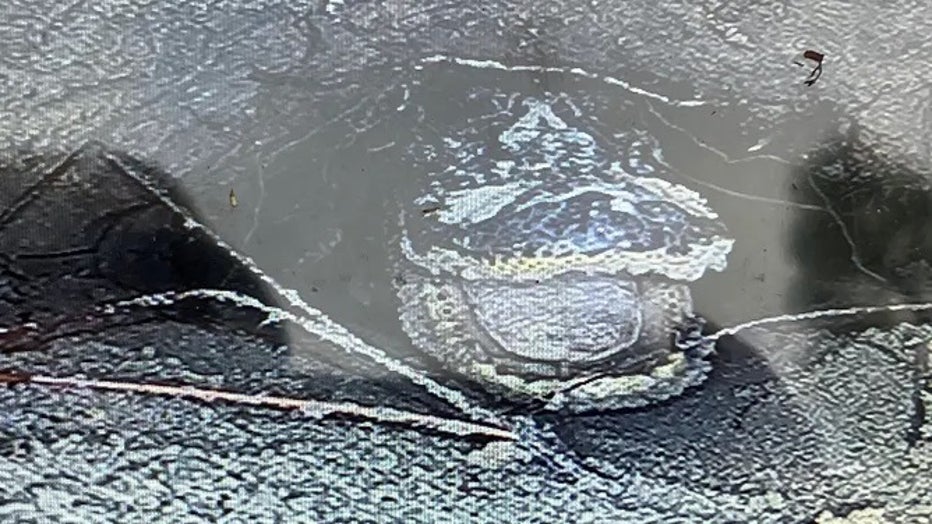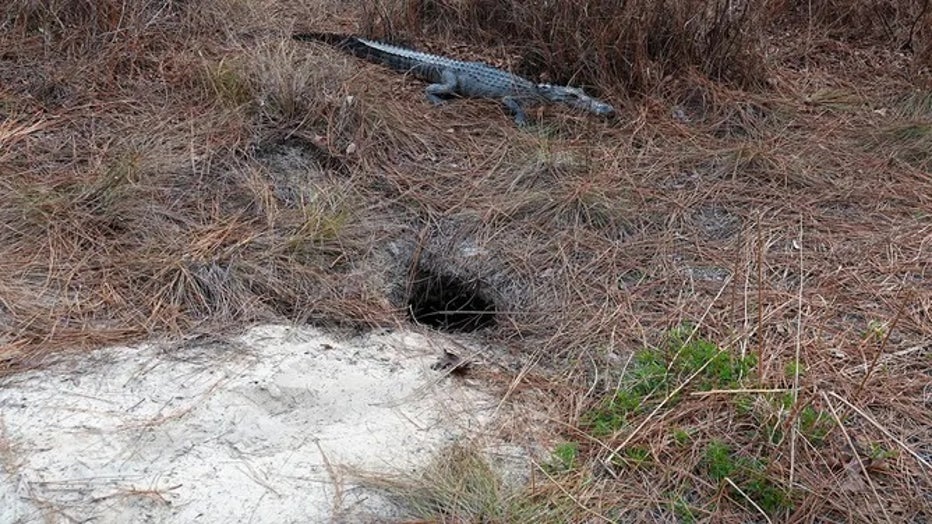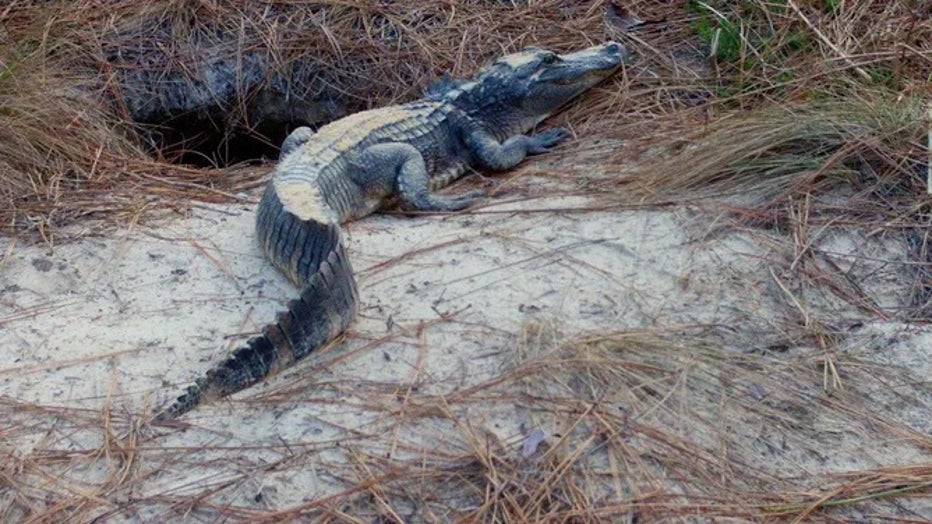Georgia biologists shocked to see alligator ‘smiling back' from tortoise hole
TATTNALL COUNTY, Ga. - You typically don't want to be close enough to see the expression on a large alligator's face.
A group of Georgia state wildlife biologists recently had one such experience after looking down a gopher tortoise hole and seeing a 4.5-foot alligator "smiling back."
MASSIVE ALLIGATOR CRUSHES THROUGH METAL FENCE AT GOLF COURSE

A group of Georgia state wildlife biologists received that uncanny welcome message after recently looking down a gopher tortoise hole and saw a 4.5-foot alligator ‘smiling back.' (Wildlife Resources Division - Georgia DNR)
"Gopher tortoise burrows benefit over 350 different species, but American alligators aren't usually on that list," Georgia Wildlife Resources Division said in a Facebook post Wednesday. "Nevertheless, the past three winters in Tatnall County, our biologists have found a gator in a gopher hole."
In the last two years, a gator greeted Georgia biologists at the same burrow and a nearby one in 2021. State biologists suspected it was the same gator, so they set up a game camera to document the use this year. They even walked up on the gator sunning by the burrow’s apron.

In the last two years, a gator greeted Georgia biologists at the same burrow and a nearby one in 2021. (Wildlife Resources Division - Georgia DNR)
"The big reptile didn’t dive for the hole, and even seemed reluctant to go in, which leads our biologists to believe that the gator slides in backwards," they said.
The agency said gators often winter in dens or holes along waterways.
"But the burrow is farther than eight football fields from a significant water source. In between is rugged, fire-suppressed sandhills scrub, as well as other tortoise burrows," they said.
ZOO ATLANTA WELCOMES SMALLEST NORTH AMERICAN TURTLE HATCHLINGS

Georgia Wildlife Resources Division said gators often winter in dens or holes along waterways. (Wildlife Resources Division - Georgia DNR)
State biologists speculate there's memory involved as to why this particular gator traveled so far to use the hole.
"The alligator can’t be following last year's scent trail, so we can only assume it's remembering that’s the place to go," the agency said.
The DNR said they plan to check the tortoise burrow over the summer to see if the slower reptiles are crawling in when the gator is gone.
"It’s still a work in progress in certain respects to fully understand what’s going on with this burrow, and with this gator," they said.

